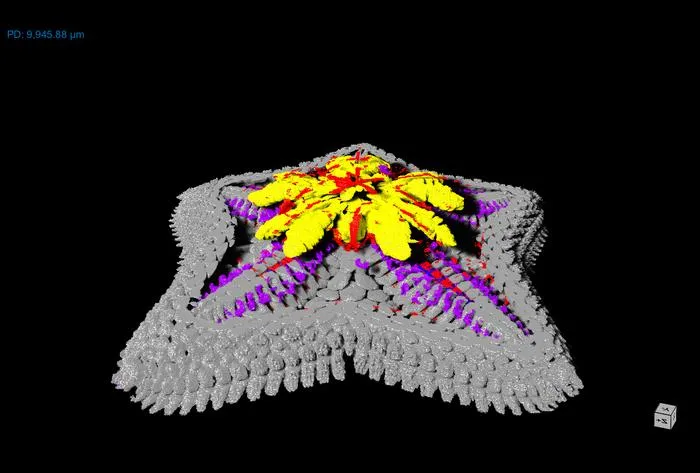Starfish have always been a topic of intrigue, whether that’s due to their ability to regrow limbs, or simply the question of where their body ends, and their head begins. Well, scientists might finally have the answer to the latter.
Researchers from Stanford University with help from a University of Southampton researcher are suggesting that the entire body of a starfish, as well as other echinoderms, is more like a head than a body.
Groups of animals that include starfish, sea urchins and sand dollars, echinoderms are a group of animals that have a unique ‘fivefold symmetric’ body plan. That means a body that is arranged in five equal sections.
“How the different body parts of the echinoderms relate to those we see in other animal groups has been a mystery to scientists for as long as we’ve been studying them,” says Dr Jeff Thompson, a co-author on the study from the University of Southampton.
“In their bilateral relatives, the body is divided into a head, trunk, and tail. But just looking at a starfish, it's impossible to see how these sections relate to the bodies of bilateral animals.”
Bilateral animals, including humans and most of the animal kingdom, have two sides. The left- and right-side mirror each other, but are unique to each other.
For the study, first scientists from Stanford University compared the molecular markers of a starfish to similar marine creatures. By comparing their development, the team could begin to understand how starfish evolved a unique body style.
Using a variety of high-tech molecular and genomic techniques, the team at Stanford were able to understand where different genes were expressed during the development of starfish, resulting in their end shape and structure.

“When we compared the expression of genes in a starfish to other groups of animals, like vertebrates, it appeared that a crucial part of the body plan was missing,” said Thompson.
“The genes that are typically involved in the patterning of the trunk of the animal weren’t expressed in the ectoderm. It seems the whole echinoderm body plan is roughly equivalent to the head in other groups of animals.”
This suggests that starfish may actually evolve their five-section body by losing the trunk region of their bilateral ancestors, allowing them to move and feed differently.
“Our research tells us the echinoderm body plan evolved in a more complex way than previously thought and there is still much to learn about these intriguing creatures,” says Thompson.
“As someone who has studied them for the last ten years, these findings have radically changed how I think about this group of animals.”
Read more:
